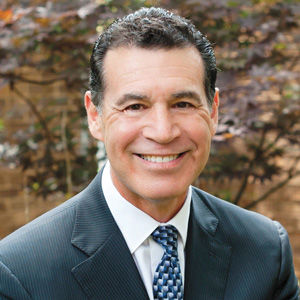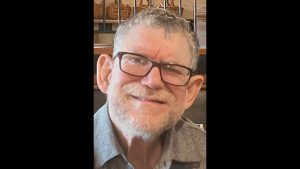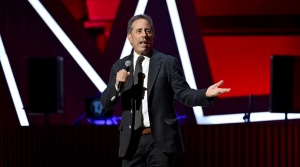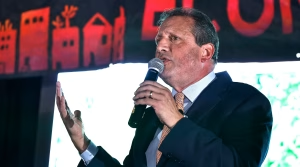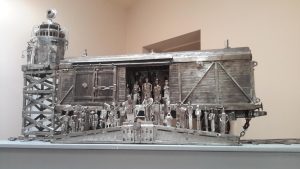Parsha offers guidance on managing stress of change
Published February 6, 2020
D’VAR TORAH — Beshalach
The Book of Exodus 13:17 begins with two words: “Vay’hi b’shalach” – “And it came to be with the letting go…” (of the People [Israelites] by Pharaoh). Of all the words found in Parashat B’shalach (Exodus 13:17-17:16) the second compound word – b’shalach – casts a light on one of the most stressful aspects of human cognitive life – managing the stresses of change and designing a strategy for a healthy transition.
Data published in 2015 by University Hospitals out of Cleveland cites, “Death of a loved one, Divorce, Moving, Major Illness or injury and Job Loss” as the five most stressful life events. These stressors can contribute to symptoms and issues related to “Digestive Health, Inflammation, Immune System, Bone Density, Sexual Health, Sleep and Anxiety.” Imagine, as we put this Parasha into our minds, the thousands of Israelites (and possibly others) who took up their lives, their history, whatever belongings they could carry (though there was some “shop-lifting” going on during this period of chaos) along with their loved ones and ventured out of the confines of one unacceptable circumstance in order to cross the waters of uncertainty and into a wilderness; a wilderness that offered no guarantee of success or even survival other than through the words of a man (Moses) who channeled the messages and miracles of an invisible god.
ADVERTISEMENT
If the infection is so severe that the limb must be amputated or death will incur, many make the decision to remove the limb. When an outplacement professional discusses job insecurities, the conclusion that any job is better than the one in which is being occupied must considered. When we find that the comfort foods of our family ancestry are actually killing us slowly, we have three major choices: Enjoy the foods that kindle the memories of “the good times” past in their original state, completely reject the food in favor of preserving one’s longevity and further linking one’s self to potential generations that wouldn’t have been seen if our lives were somehow shortened or modify the recipe to replace now to be understood damaging ingredients with ones that are more whole or healthy.
On an abstract level, our Israelite ancestors faced macro and micro events (long before the Exodus) that challenged our status quo and either forced or inspired us to let go and move on. Letting go and moving on is so much easier said than done, and yet it’s something we experience, in small or in large part every day. Have you ever had a person cut in line while you were waiting to check out at a store or witness that one car that just has to run the now changing red light across your path causing you to hesitate ever-so slightly while the car behind you either sounds their horn of frustration or nearly hits your rear bumper? The analogies are endless.
I mentioned change versus transition previously. Change can occur either by choice or by uncontrollable influences. Transition, and its process, is an action that is motivated by our own decisions. Change alters our current or future state whereas transition provides us with the mechanism(s) toward a desired path to a long-lasting change or adaptation. The Israelites motivated by the change in the social and political status of their alien residency in Egypt chose a path of transition that began with so many unknowns. We need to look back into our texts to see that the formula of transition began in the first chapter of Genesis with the Creation story.
Throughout the Book of Genesis, we, the reader, have become conditioned to accept the ideas of change and transition which brings us to this most transitional event at this point in the Torah. I remind you that even though we refer back to our history to find patterns to help us see where we are going today, we must not fall into the hole of nostalgia and feel that those past times were “the best of times.” Those were the “best of times” at that time.
ADVERTISEMENT
I feel that the best of times are right in front of us and we need to use our past to allay our fears (the greatest obstacle toward navigating change in our lives) that would cause us to flinch and revert back to the perceived comfort that the past provides. Trees cannot grow in concrete. Certainly, the tree will withstand the winds of change, but it will never receive the necessary nutrition to grow. Contrarily, if the tree is placed in a rushing river, it will receive more nutrients than it would need but will not be able to settle its roots in a river flowing with ever changing currents. Similarly, we will not grow without a healthy acceptance of change and a transitional road map. So, yes, we can change what we do, but it’s hard to change who we are without experience or guidance of some kind.
Personal experiences provide us with enough history to know, for instance, that if I place my hand on a recently active stove top, I will probably burn it. When you are working in a kitchen with others and are unaware that the stove top was recently in use, it may be helpful if others will watch out for you and warn you that the stove top is still hot. Communication in an active kitchen is an important safety feature. When the thousands of Israelites were crossing the Reed Sea together, their leader provided direction and confidence. Their collective experiences helped them to manage the small details such as, keeping their families together during a long journey, protecting their property and privacy as best as possible while watching out for others in the same extended family. Childcare may have been a team effort and other logistical challenges would have been administered collectively. Layered communication was as vital then as it is now.
The significant task of Moses and his family, at this time and throughout the rest of the Torah, was to continually remind the People why they started their journey. Remember the urgency that was once felt in order to let go and move on. Remember the call to freedom and the transition to a new collective identity. Remember that there is a promised land that exists only if you take active steps to move toward it and plant your feet firmly in the space of designed destiny.
When leaving Soddom and Gemmorah, Lot’s wife looked back and, subsequently, turned into a pillar salt. This can be a metaphor for looking back and becoming frozen in a dysfunctional past. It wasn’t the act of looking back that froze her in her place, it was her intention at that time; the pangs of nostalgia that caused her a moment to pine for that past. We have rear-view mirrors in our cars for a reason, don’t we? When the light turns green and you have surveyed your path, move on toward your destination. You can rely on your community to “watch out” for you as you can “watch out” for others. Two eyes are fine, but thousands of eyes can see so much more. Your community is right here, to help to abate your fears and offer you a provisional roadmap to continue your journey forward. Life provides all of us with experiences for facing change and our Jewish history provides us with means to acknowledge our fears while transitioning to another phase of that life. When you see the fragmented words of the Song of the Sea in Chapter 15 of the Book of Exodus, notice that the certainty of the black words is floating in a sea of the white spaces of the unknown. The Israelites had to find another gear in the engine of their transition. I hope that you will be able to find another gear in that mechanism that moves you from today to tomorrow.
Shabbat Shalom.
Rabbi-Cantor Ronald D. Eichaker serves United Hebrew Congregation and is a member of the St. Louis Rabbinical and Cantorial Association, which coordinates the weekly d’var Torah for the Light.



